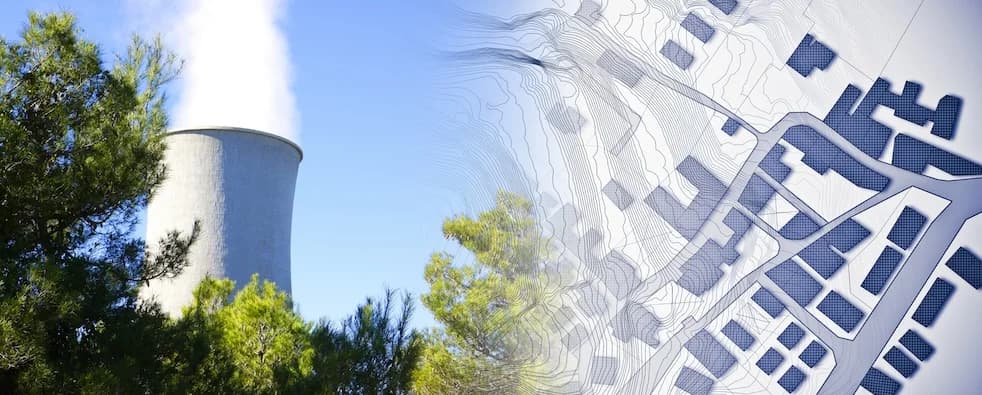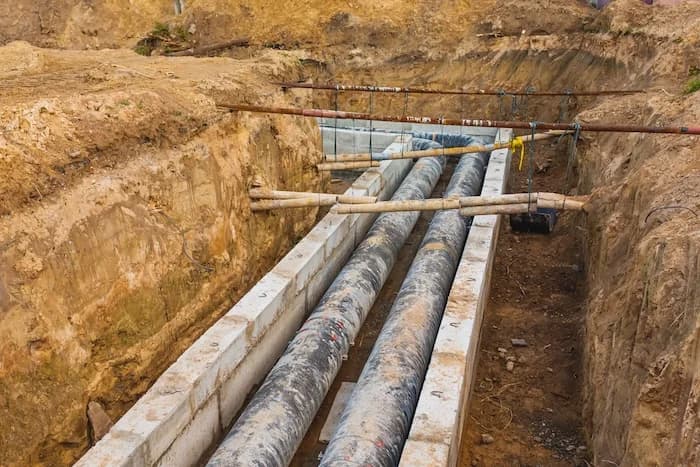
Thermal Energy Networks have grown to form an integral part of the United States’ energy mix, with 13 states now implementing such networks as part of a nationwide push towards cleaner energy sources. But what are Thermal Energy Networks (TENs), how do they work, and how do Heat Transfer Fluids play a role? We answer all of these questions and more in the following learning resource.
Unlike any other renewable energy technology, Thermal Energy Networks offer a next-generation approach to heating and cooling processes – not only in industrial processes, but in buildings and communities throughout the country. However, despite their increased uptake, much confusion surrounds this term. Indeed, leaders in geothermal have highlighted this confusion as one of the key barriers to growth in this exciting industry.
To address this confusion, we’re breaking down everything you need to know as a key decision-maker: from understanding their core components to using Heat Transfer Fluids to enhance their efficiency. Keep reading to learn more…
Understanding Thermal Energy Networks (TENs)
While ‘Thermal Energy Networks’ is the official term, you may have heard these referred to as district heating or cooling. Regardless of your term of choice, these systems are designed to achieve one objective: to connect multiple buildings into a shared network with sources of thermal energy like geothermal aquifers, boreholes, surface water, or even other buildings in the network like large manufacturing, recreational, or healthcare facilities that can share excess thermal energy with small businesses and homes.
Whilst the designs of these systems tend to vary, they are generally composed of a series of insulated pipes that transport heated or chilled fluids to and from various sites. These systems are highly popular not only for their excellent heating and cooling abilities, but also for the high levels of efficiency and sustainability they provide.
The Advantages of Thermal Energy Networks
The United States is embracing Thermal Energy Networks on a nationwide scale, and it’s not hard to see why. Unlike any other form of energy transit, these networks offer significant benefits:
- Efficiency: Centralizing the production of heat or cooling can lead to significant reductions in energy use and costs, as it is easier to manage and optimize a single system than multiple smaller ones.
- Reduced carbon footprint: By utilizing renewable energy sources and waste heat, these networks help reduce greenhouse gas emissions and reliance on fossil fuels.
- Reliability and versatility: Thermal energy networks provide a consistent supply of heating or cooling, which can be adjusted based on current demand without the need for individual systems to scale up or down.
Key Components in Thermal Energy Networks

As discussed above, the base design of Thermal Energy Networks tend to differ according to a range of factors. However, in our day-to-day work, we deal with networks that typically feature four key components: production units, a distribution system, an exchange unit and a return system.
- Thermal Energy Source: Most people get thermal energy by burning fossil fuels in a boiler, furnace, or water heater. But there are much more efficient and clean ways to get thermal energy, such as from the earth, which holds a constant temperature year round. Many of the buildings around us also have waste heat that can be recycled and shared.
- Distribution system: In most cases, distribution systems in Thermal Energy Networks are insulated pipes that transport the thermal energy. The efficiency of these pipes – largely driven by the Heat Transfer Fluid they use – are all crucial when it comes to minimizing energy loss during transit.
- Exchange units: Systems within the buildings are used to transfer thermal energy from the network itself into any internal heating or cooling systems.
- Return system: Once the energy has been delivered to the system, any cooled down or heated fluids are then sent back to the production units.
The Role of Heat Transfer Fluids in TENs
Heat Transfer Fluids form a critical element of the operational efficiency of Thermal Energy Networks. This is easy to understand given the fluid’s role in transporting heat throughout the network.
Fundamentally, the effectiveness of a Thermal Energy Network will rely heavily on the performance of its Heat Transfer Fluid. Your fluid should effectively absorb and transfer heat while maintaining their core properties under varying processing conditions and temperatures.
When it comes to deciding on a Heat Transfer Fluid, you should consider a number of factors, including:
- Temperature requirements;
- System design;
- Industrial processes; and
- Potential environmental impacts.
Thermal energy networks represent a vital step forward in our approach to energy management, and with the use of advanced heat transfer fluids, these systems can serve as the backbone of urban energy infrastructure, driving efficiency and sustainability. Our 100% USDA Certified Biobased range has been engineered to achieve just that, ensuring that networks operate at peak efficiency with minimal environmental impact.
CORECHEM: Your Geothermal Partner
Here at CORECHEM, we’re passionate about enhancing the effectiveness of Thermal Energy Networks with high-performance, biobased Heat Transfer Fluids. To get started, browse our full selection or contact us to discuss your network’s unique requirements.
